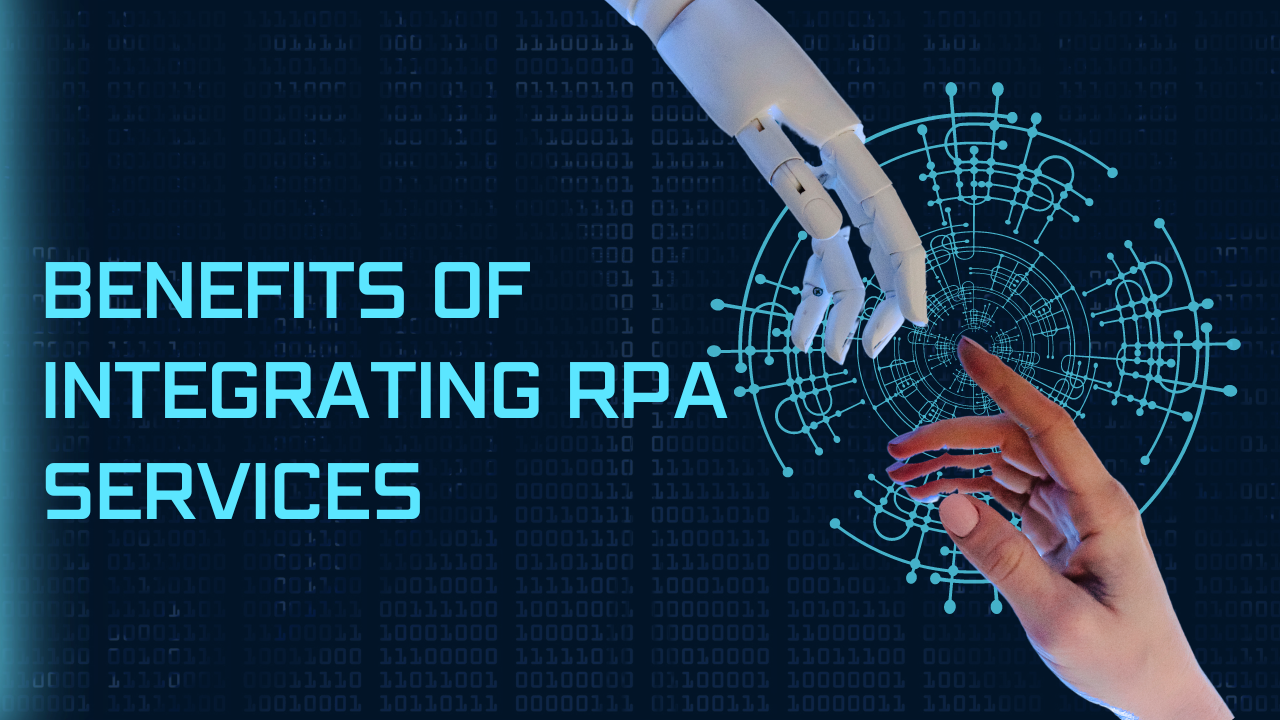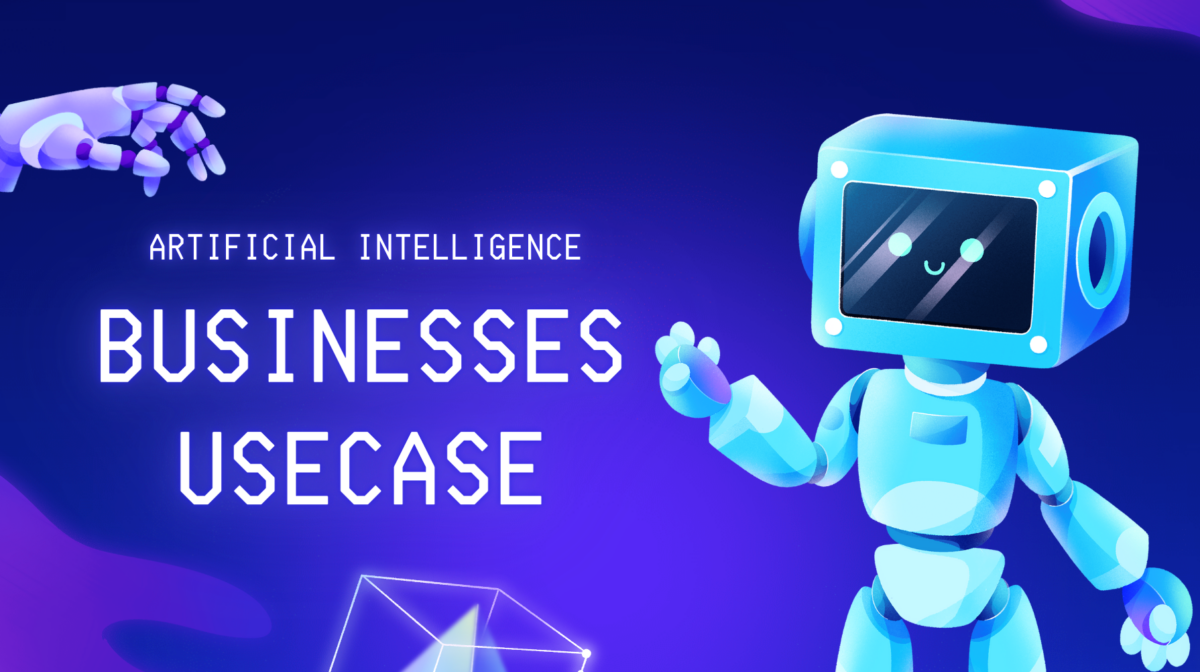This website uses cookies so that we can provide you with the best user experience possible. Cookie information is stored in your browser and performs functions such as recognising you when you return to our website and helping our team to understand which sections of the website you find most interesting and useful.
The Powerful Combination of RPA Services and Big Data for Business Growth

Data is the lifeblood of successful businesses. However, collecting and analyzing data can be a time-consuming, resource-intensive task. That’s why companies are turning to Robotic Process Automation (RPA) services and Big Data to make data processing faster and more efficient. In this article, we will explore how the integration of RPA services and Big Data can have a powerful impact on business growth.
Understanding RPA Services and Big Data
Before we delve into the benefits of integrating these two technologies, let’s first define each one.
Defining RPA Services
RPA is a technology that automates repetitive and rule-based processes, freeing up human resources to focus on more complex tasks. Essentially, RPA uses software robots to perform administrative tasks such as data entry, sorting, and processing.
One of the main advantages of RPA services is that they can significantly increase efficiency and accuracy in business processes. By automating repetitive tasks, RPA can reduce the risk of human error and save time for employees, allowing them to focus on higher-value work.
In addition, RPA can also help companies save money by reducing the need for manual labor. By using software robots to perform tasks, businesses can avoid hiring additional staff and can cut down on operational costs.
The combination of RPA services and Big Data presents a compelling opportunity for businesses to achieve growth, efficiency, and innovation. By harnessing the power of automation and data analytics, organizations can streamline processes, gain valuable insights, and drive informed decision-making. When integrated with mobile application development, this powerful combination opens up new avenues for businesses to leverage customer data and enhance their overall user experience. Embracing this technological fusion can unlock immense potential and propel businesses to thrive in today’s data-driven economy.
The Importance of Big Data in Business
On the other hand, Big Data refers to large sets of data that can be analyzed to reveal patterns and trends. The insights gained from Big Data can help companies make smarter, data-driven decisions and improve their operations.
One of the key benefits of Big Data is that it allows companies to gain a deeper understanding of their customers. By analyzing customer data, businesses can identify trends and preferences, and can use this information to improve their products and services.
In addition, Big Data can also help companies optimize their operations. By analyzing data on production processes, for example, businesses can identify inefficiencies and bottlenecks, and can take steps to improve their workflows.
Another advantage of Big Data is that it can help companies stay ahead of the competition. By analyzing data on market trends and consumer behavior, businesses can identify emerging opportunities and can adapt their strategies accordingly.
Overall, the integration of RPA services and Big Data can provide significant benefits for businesses. By automating repetitive tasks and analyzing large sets of data, companies can improve efficiency, reduce costs, and make smarter, data-driven decisions.
For app developers, the combination of RPA services and big data opens up a realm of possibilities. By harnessing big data, app developers can gain valuable insights into user behavior, preferences, and usage patterns. This information can be leveraged to create personalized and targeted app experiences, enhancing user engagement and satisfaction. RPA services, in turn, can automate various app development processes, such as testing, deployment, and monitoring, accelerating time-to-market and reducing development costs.
How RPA Services and Big Data Complement Each Other
While RPA and Big Data may seem like two separate technologies, they actually complement each other in many ways. Here are a few examples:
Streamlining Data Collection and Processing
By automating data collection and processing through RPA, companies can speed up the analysis process and gain insights faster. This is especially important for companies dealing with large amounts of data, as manual processing can be time-consuming and error-prone. With RPA, data can be collected and processed automatically, freeing up valuable time and resources for other tasks.
For example, a healthcare company may use RPA to automatically collect patient data from various sources, such as electronic health records and medical devices. This data can then be processed and analyzed to identify patterns and insights that can inform better patient care and treatment decisions.
Enhancing Decision-Making with Data-Driven Insights
When combined with Big Data, RPA can provide a powerful tool for making data-driven decisions. By automating data processing and analysis, RPA can reveal insights that may have gone unnoticed by humans. These insights can inform better decision-making and help companies stay ahead of the curve.
For example, a retail company may use RPA to automatically collect and analyze customer data from various sources, such as social media and online shopping platforms. This data can then be used to identify trends and preferences among customers, which can inform better marketing and sales strategies.
Improving Data Accuracy and Consistency
Another way that RPA and Big Data complement each other is by improving data accuracy and consistency. With RPA, data can be collected and processed automatically, reducing the risk of human error. This can lead to more accurate and consistent data, which is essential for making informed business decisions.
For example, a financial services company may use RPA to automatically collect and process financial data from various sources, such as bank statements and investment reports. This data can then be analyzed to identify trends and patterns, which can inform better investment decisions.
In conclusion, RPA and Big Data are two powerful technologies that can work together to provide valuable insights and improve business outcomes. By automating data collection and processing, organizations can speed up analysis and make better decisions based on data-driven insights. Furthermore, RPA can improve data accuracy and consistency, reducing the risk of human error and ensuring that decisions are based on reliable information.
Key Benefits of Integrating RPA Services and Big Data

Integrating RPA services and Big Data can have a number of benefits for businesses. Here are three key benefits:
Improved Efficiency and Productivity
By automating repetitive tasks, RPA services can free up human resources to focus on higher-value tasks. This can lead to improved efficiency and productivity, which can ultimately drive business growth.
For example, imagine a company that processes a large number of invoices each day. With RPA services, the company can automate the process of data entry and sorting, which would otherwise require a significant amount of time and resources. This would allow employees to focus on more complex tasks, such as analyzing financial data or developing new business strategies.
Cost Reduction and Resource Optimization
Automating repetitive tasks can also lead to cost reductions and resource optimization. By using RPA services to perform tasks such as data entry and sorting, companies can reduce the need for human labor and achieve cost savings.
In addition, RPA services can help companies optimize their use of resources. For example, by automating the process of inventory management, a company can ensure that it always has the right amount of stock on hand, without overstocking or understocking. This can lead to cost savings and improved efficiency.
Enhanced Customer Experience and Personalization
By using Big Data to gain insights into customer behavior and preferences, companies can create more personalized experiences for their customers. This can lead to increased customer satisfaction and loyalty, ultimately driving business growth.
For example, a company that sells clothing could use Big Data to analyze customer purchase history and preferences. With this information, the company could create personalized recommendations for each customer, based on their individual style and preferences. This would not only improve the customer experience, but also increase the likelihood of repeat business.
Overall, integrating RPA services and Big Data can have a significant impact on a company’s efficiency, cost savings, and customer experience. By leveraging the power of automation and data analysis, businesses can stay ahead of the competition and drive growth in today’s fast-paced digital economy.
Real-World Applications of RPA Services and Big Data
Now that we’ve explored the benefits of integrating RPA services and Big Data, let’s take a look at some real-world applications of these technologies.
Finance and Banking Industry
The finance and banking industry is a prime example of how RPA and Big Data can be used to drive business growth. By collecting and analyzing large sets of financial data, banks can make smarter investment decisions and optimize their operations.
For example, banks can use RPA to automate tasks such as data entry and reconciliation, freeing up employees to focus on more complex tasks. By analyzing customer data, banks can also create personalized financial products and services, improving customer satisfaction and loyalty.
Healthcare and Medical Research
In healthcare and medical research, RPA and Big Data can be used to streamline administrative tasks and collect patient data. This can lead to faster diagnosis and treatment, ultimately improving patient outcomes.
For instance, RPA can be used to automate tasks such as appointment scheduling and medical record keeping, reducing the administrative burden on healthcare professionals. Big Data can also be used to analyze patient data and identify patterns, leading to more accurate diagnoses and personalized treatment plans.
Retail and E-commerce
In the retail and e-commerce industries, RPA can be used to automate tasks such as order processing and inventory management. By using Big Data to gain insights into customer behavior, these industries can create more targeted marketing campaigns and improve customer experiences.
For example, RPA can be used to automatically process orders and update inventory levels, reducing the risk of human error. By analyzing customer data, retailers can also create personalized product recommendations and marketing campaigns, improving customer engagement and loyalty.
Overcoming Challenges in Implementing RPA Services and Big Data Solutions
While the benefits of integrating RPA services and Big Data are clear, there are still challenges to overcome when implementing these solutions. However, with proper planning and execution, these challenges can be addressed and the full potential of these technologies can be realized.
Data Security and Privacy Concerns
Storing and analyzing large sets of data can raise concerns about data security and privacy. Companies must take steps to ensure that data is protected and used appropriately. This can be accomplished through the implementation of secure data storage systems and access controls. Additionally, companies can employ encryption techniques to protect sensitive data from unauthorized access.
Moreover, companies must comply with data privacy regulations such as the General Data Protection Regulation (GDPR) and the California Consumer Privacy Act (CCPA) to ensure that customer data is protected and used in compliance with legal requirements.
Ensuring Data Quality and Accuracy
When using Big Data to make business decisions, it’s important to ensure that the data is of high quality and accuracy. Garbage in, garbage out, as the saying goes. To ensure data quality, companies must implement data governance policies and procedures to ensure that data is accurate, complete, and consistent.
Data cleansing and data validation techniques can also be used to ensure that data is accurate and free from errors. Additionally, companies can employ data profiling techniques to gain insights into the quality of their data and identify areas for improvement.
Change Management and Employee Adaptation
Implementing new technologies such as RPA services and Big Data requires a change in company culture and employee adaptation. Companies must ensure that their employees are trained and prepared for the new way of working.
Employee training programs can be implemented to provide employees with the necessary skills and knowledge to work with these technologies. Additionally, companies can provide ongoing support and resources to help employees adapt to the new way of working.
Furthermore, companies can incentivize employees to embrace these technologies by highlighting the benefits they bring, such as increased efficiency, improved decision-making, and enhanced job satisfaction.
In conclusion, while there are challenges to overcome when implementing RPA services and Big Data solutions, these challenges can be addressed through proper planning, execution, and ongoing support. By doing so, companies can realize the full potential of these technologies and gain a competitive advantage in their respective industries.
Conclusion
The integration of RPA services and Big Data represents a powerful combination for driving business growth. By automating repetitive tasks and gaining insights from Big Data, companies can improve their efficiency, reduce costs, and enhance customer experiences. While challenges remain, the benefits of these technologies make them worth pursuing for businesses looking to gain a competitive edge.



